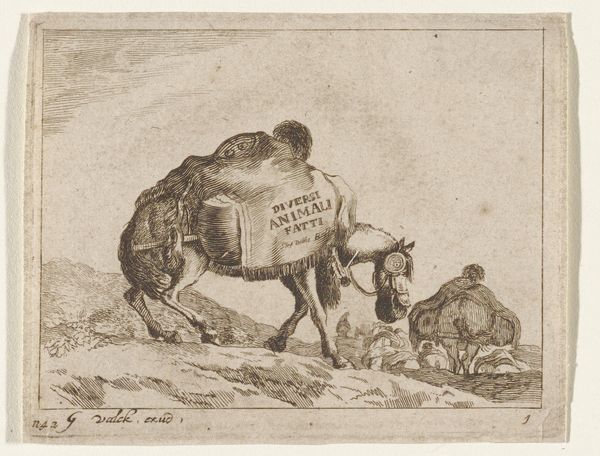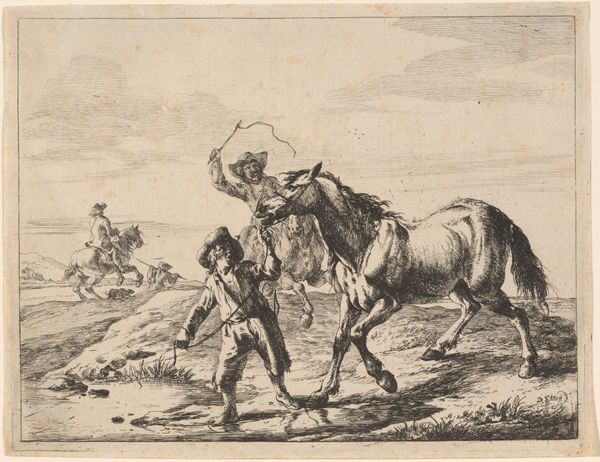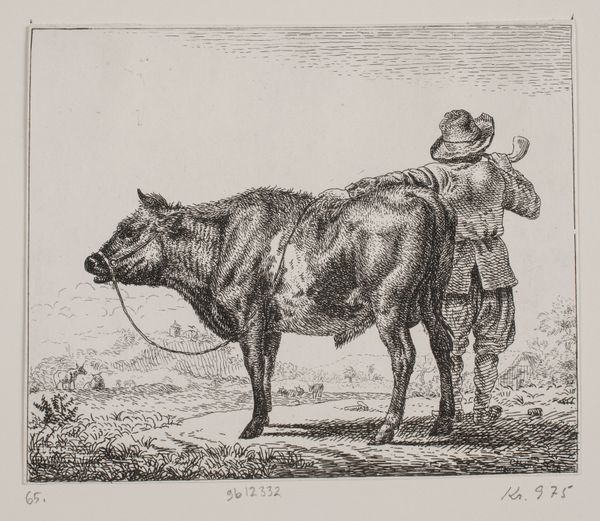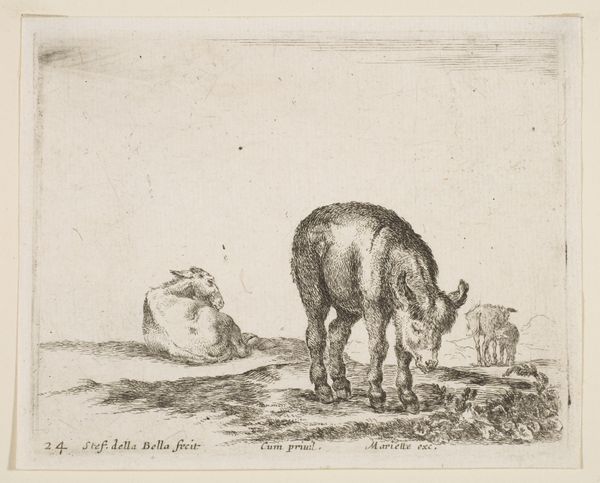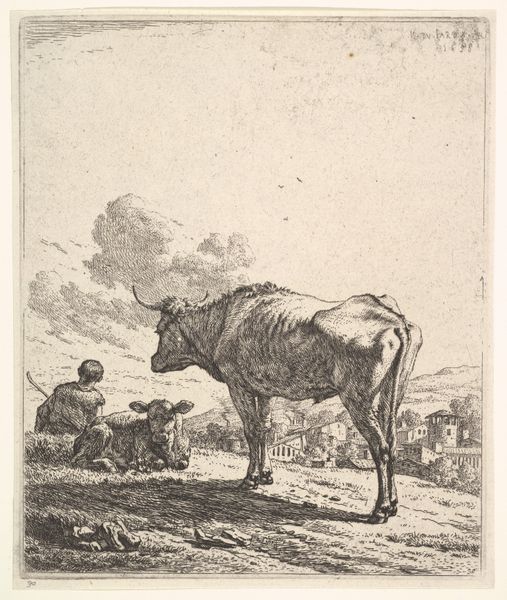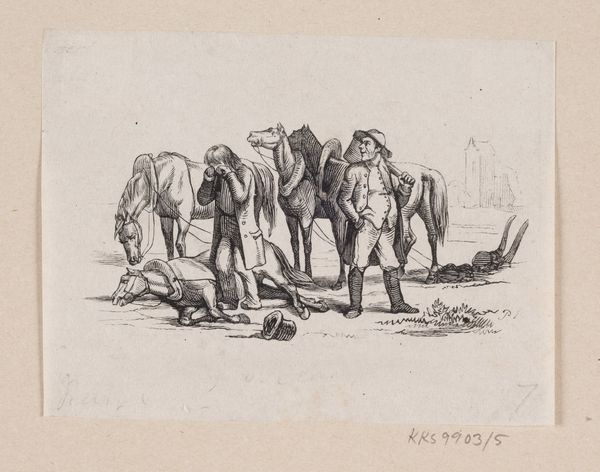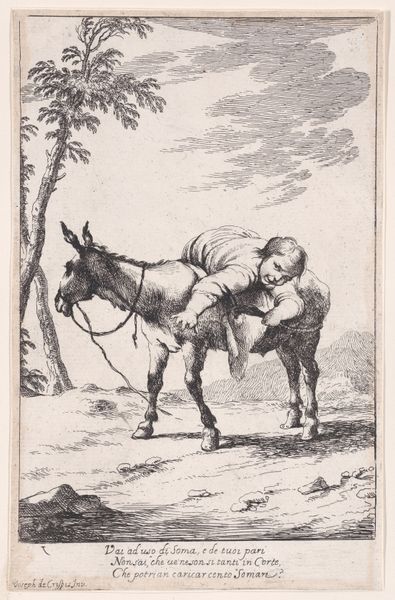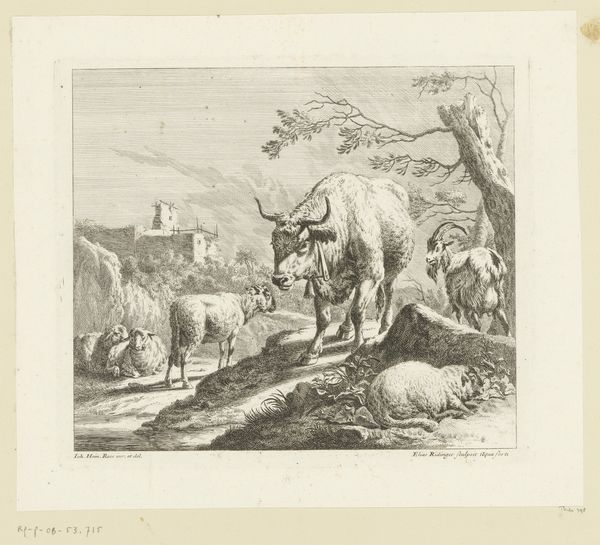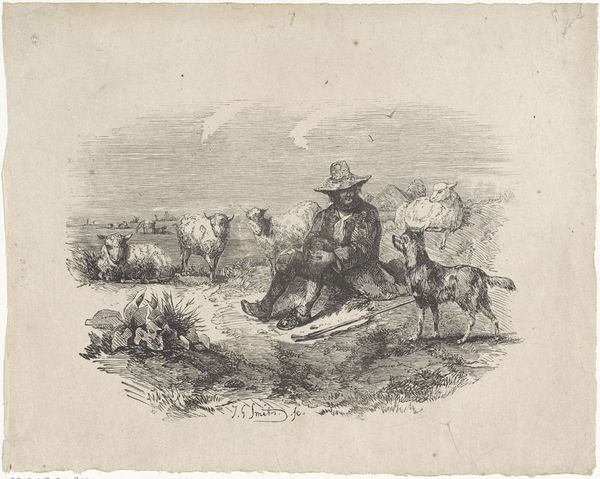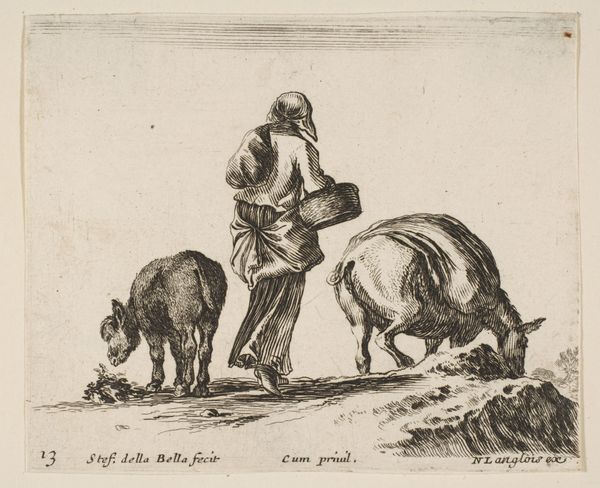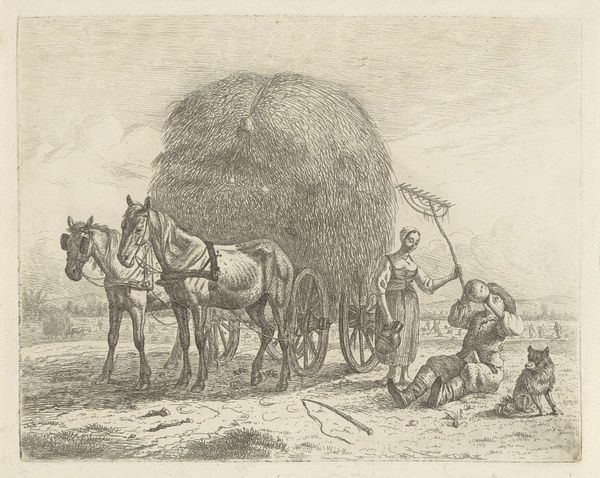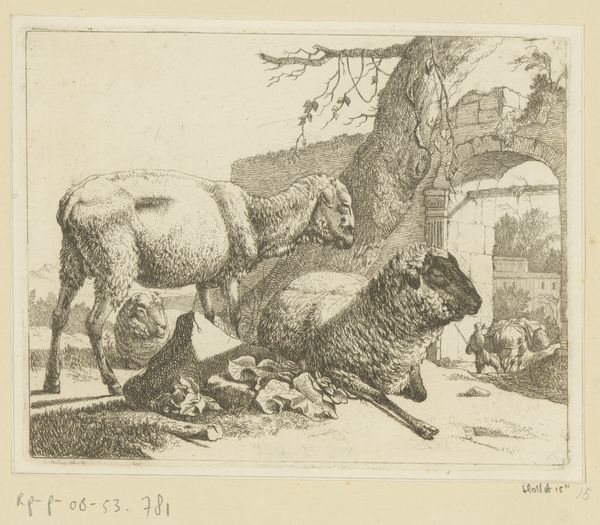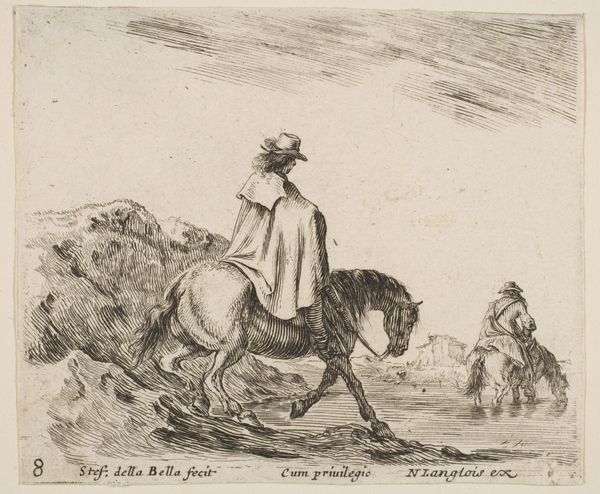
Frontispiece for Diversi Animali: Pack Horse 1636 - 1646
0:00
0:00
drawing, print, etching
#
drawing
#
baroque
#
animal
# print
#
etching
#
landscape
#
horse
#
genre-painting
Dimensions: Plate: 3 3/8 × 4 5/16 in. (8.5 × 10.9 cm) Sheet: 3 9/16 × 4 1/2 in. (9 × 11.5 cm)
Copyright: Public Domain
Curator: Stefano della Bella created this etching titled “Frontispiece for Diversi Animali: Pack Horse” sometime between 1636 and 1646. It’s currently housed at the Metropolitan Museum of Art. Editor: It strikes me as melancholic. The bleak landscape and the heavily laden animal evoke a sense of burden and struggle. The etching style only adds to the sense of starkness. Curator: Della Bella, working in the Baroque style, often focused on scenes of everyday life and the natural world. What’s particularly interesting here is the inclusion of text on the pack carried by the horse: "Diversi Animali Fati". This translates to "Different Animals of Fate.” Editor: So, the inscription positions these animals not just as beasts of burden but as subjects of destiny, which immediately makes you question the broader social implications, the unequal distribution of labor, and the precarious existence of those who rely on animal power. It encourages us to consider ethical responsibilities towards these creatures. Curator: Absolutely. In 17th-century Europe, prints like this circulated widely. The themes explored in these kinds of images reinforced social hierarchies but they also started to provoke interest in scientific observation, feeding curiosity about the natural world among the expanding urban populations. Editor: There's something undeniably powerful in how the scene suggests a hidden narrative. Who are these people in the background? Where are they going? There is the subtle presence of political undertones which invite considerations of power structures, class disparities and societal norms embedded in that period. It raises the important theme of resilience, not only of the horse, but of the vulnerable people who must depend on the work of the animal. Curator: Considering that della Bella also designed costumes and stage sets, this etching feels almost like a miniature drama frozen in time, using very spare elements. The bleakness seems really calculated, I would suggest. Editor: Looking at it through this lens adds another dimension; a meditation on the quiet, unseen struggles that underpin daily existence, made palpable through the stark and weary figure of the horse. Curator: Well, it shows us that what seems simple can carry a great deal of complex meaning, sparking discussions even centuries later. Editor: It invites us to extend empathy to these silent laborers—human and animal—whose contributions have shaped the world.
Comments
No comments
Be the first to comment and join the conversation on the ultimate creative platform.
